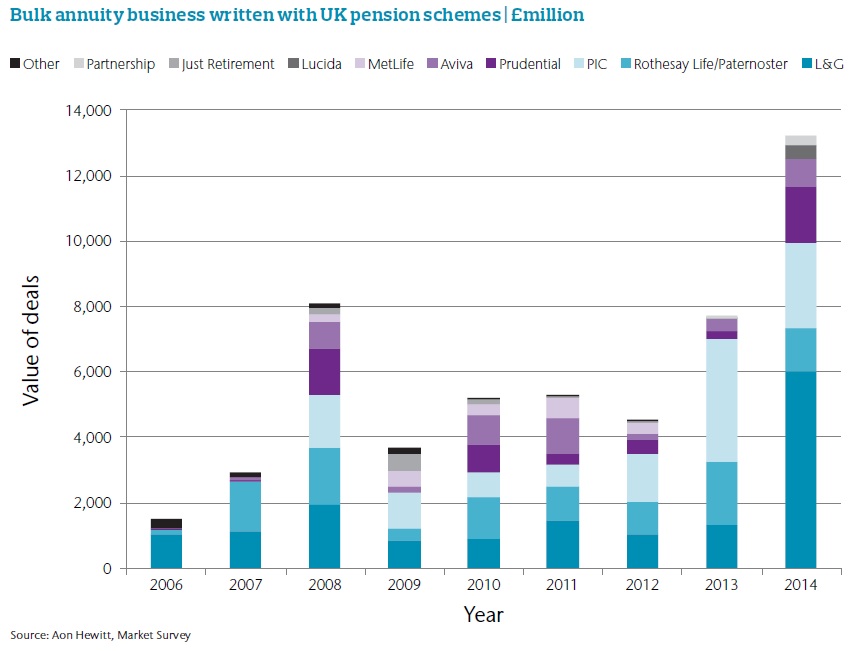 Art by Alex Eben Meyer“You know, Nick,” I say,
sipping on a glass of pink Champagne. “We might have been missing the bigger
picture on this lack of diversity issue.”
Art by Alex Eben Meyer“You know, Nick,” I say,
sipping on a glass of pink Champagne. “We might have been missing the bigger
picture on this lack of diversity issue.”
“What’s that, Liz?” asks Nick, as an asset management host refills our glasses.
“What if the asset owners don’t want women in fund management?” I question, chewing on a cheese straw. “I mean, this could be just one big boys’ club. Olive?”
We are in the exhibition hall of the Edinburgh International Conference Centre. It has been decked out with stalls sponsored by companies offering a wide range of financial services to institutional investors. For the next three days, stewards of the UK’s retirement assets will be educated and entertained by experts who have information to impart—or products to push—at the annual National Association of Pension Funds’ Investment Conference.
Before we had hit the complimentary champers, Jimmy Wales, co-founder of Wikipedia and one of the few speakers from outside the investment world, had told the audience all about his internet encyclopaedia.
“Around 87% of Wikipedia editors are men,” he noted, “… which is about the same as this audience.” Wales was, in fact, wrong: Only 75% of the delegates who sat before him were men.
The following day, renowned genetics expert Professor Robert Winston makes a similar observation. “Most of you in this room are males. Some of you are over the age of 50—quite a lot of you…”
That both these external speakers—themselves from gender-imbalanced sectors—found the male dominance of the industry worthy of comment is worthy of comment in itself.
But while 25% of the delegates are women—which is above the industry average—just 6.4% of the entire mob are female pension fund trustees. That’s 49 out of 760, for those checking my maths. The figure makes the 15 female speakers out of 67 on the line-up (22.6%) seem verging on equality. (For reference, there are 212 male trustees, making up 28% of total attendees.)
The usual arguments trotted out for why women are so thin on the ground in asset management do not apply here. A trustee’s role isn’t full time, so there’s no need for “flexible working”. The few meetings a year could be worked around maternity leave/baby duties if that was a sticking point. Women are returning to work in larger numbers than ever before so the older female workforce remains in place.
“I don’t know why there are so very few female trustees,” says a high-ranking pension professional (male) who has stopped by the stand for a free beer. “It would be interesting to find out. Do you think it really makes a difference?”
Later on at a post-dinner cocktail party (you’ve grasped the main thrust of the event by now, haven’t you?) we get our answer.
“They don’t want to know,” says the female head trustee for a large UK defined benefit (DB) pension. “I sit at a table of men who have been there longer than I have and it’s very difficult for me to assert my authority, to talk about new ideas.”
We could (and do) go on for hours about equal pay and the struggle our foremothers had in the last century, but perhaps the lack of diversity we are seeing in 2015 is a hangover from that era.
It is rare to see a trustee board made up of cross-section of ages, let alone genders. This has much to do with the disconnect between generations as DB funds have made way for self-managed defined contribution options: If you’re not being offered a DB plan, do you care how they’re managed?
Also, it would strike me as odd if I sat on a trustee board with an uneven ratio of men and women, whereas my father might not have noticed it. Far from being bigoted, he was just from another time.
Additionally, the lack of ethnic diversity on trustee boards is fairly astonishing. If more than a couple of percent of the delegate list was classed as anything other than Caucasian, I would be surprised.
On the last day of the conference, as the delegates trot out into the grey Edinburgh rain, flags above their heads read, “Living longer, investing smarter.”
To do so may need some radical re-thinking—with a more diverse team on board.

 “The fact that this new high was reached despite the further
deterioration in bond yields in the second half of 2014, which pushed up
pension costs, shows that recently the size of the bulk annuity market has been
driven more than ever by a small minority of large transactions,” said Paul
Belok, risk settlement adviser at Aon Hewitt.
“The fact that this new high was reached despite the further
deterioration in bond yields in the second half of 2014, which pushed up
pension costs, shows that recently the size of the bulk annuity market has been
driven more than ever by a small minority of large transactions,” said Paul
Belok, risk settlement adviser at Aon Hewitt.